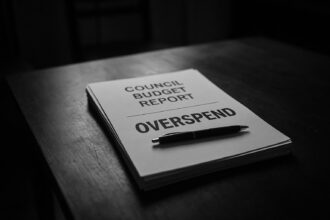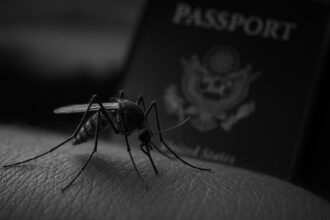A new white paper by Fashion Declares and Bates Wells highlights the urgent need for the UK government to reform fashion regulations by closing tax exemptions exploited by fast fashion, introducing Extended Producer Responsibility fees, and implementing Digital Product Passports to combat environmental degradation and promote ethical practices.
The UK faces a pressing need to modernise its approach to fashion regulation, as detailed in a recent white paper from the campaign group Fashion Declares and law firm Bates Wells. This report encapsulates a growing concern that without significant reform, the country could lag behind global efforts to mitigate the environmental impacts of its textile sector. As governmental bodies across Europe and beyond intensify their regulatory frameworks, the UK risks becoming a haven for fast fashion and unsustainable practices that undermine both economic stability and environmental integrity.
The white paper advocates for three pivotal reforms. The first is the closure of a de minimis tax exemption, which currently permits the entry of low-cost fashion items without import duties. This loophole has been heavily exploited by ultra-fast fashion brands such as Shein, which reportedly evaded £150 million in taxes in the UK in 2023. As domestic brands are burdened with full tax obligations, such discrepancies effectively skew the marketplace, empowering an influx of disposable fashion that harms both local retailers and environmental health.
Second, the proposal for an Extended Producer Responsibility (EPR) system aims to make brands accountable not only for the initial sale of their products but also for their post-consumer lifecycle. Under this scheme, companies would pay fees correlating to the environmental impact of their garments, incentivising the design of durable and repairable clothing. Such accountability can serve to alleviate the staggering 336,000 tonnes of clothing discarded annually in the UK—a figure that starkly highlights the urgency for change in this sector.
The final recommendation is the introduction of Digital Product Passports, a system that would provide real-time transparency about a garment’s materials, production conditions, and overall sustainability. This initiative aligns with forthcoming EU regulations, which are poised to enforce similar requirements, thereby setting a new standard for ethical consumption. By using QR codes that offer instant insights into a product’s history, consumers can make informed choices that reflect their values, paving the way for a more circular economy.
The push for such reforms comes as a growing recognition of the ethical complexities embedded in global supply chains. Baroness Lola Young, a noted advocate for sustainability in the fashion industry, emphasised the need to address the deep-rooted inequalities inherent in these systems. “You can’t tell me that some of the practices that are rampant in this industry would be the same if it were white folks we were talking about,” she asserted during the white paper launch. This important perspective underscores the necessity of embedding social justice alongside environmental concerns within regulatory frameworks.
As the white paper is disseminated among stakeholders and parliamentarians, its authors hope to ignite a broader dialogue that would lead to actionable policy reforms. According to Safia Minney, founder of Fashion Declares, the recommendations are not merely wish lists but urgent calls for collaborative action aimed at fostering a more sustainable industry in the UK. “By closing the de minimis customs threshold, mandating an Extended Producer Responsibility fee system, and introducing Digital Product Passports, the UK can create an effective policy and regulatory framework that incentivises responsible business practices,” she noted.
With the fast fashion industry under scrutiny globally, the UK’s regulatory lag poses not just a financial threat to local retailers but also a moral one. As the conversation about sustainability evolves, the need for actionable, comprehensive changes becomes increasingly critical. Without swift government intervention, the UK may squander its opportunity to emerge as a leader in sustainable fashion, ultimately allowing its economy to be downgraded to one defined by exploitation rather than innovation and responsibility.
Reference Map
- Paragraphs 1, 2, 3, 4, 5, 6, 7: Source 1
- Paragraphs 3, 4: Source 2
- Paragraphs 4: Source 3
- Paragraph 4: Source 4
- Paragraphs 6, 7: Source 5
- Paragraph 8: Source 6
- Paragraph 8: Source 7
Source: Noah Wire Services
- https://www.the-independent.com/life-style/fashion/news/fast-fashion-uk-white-paper-b2750085.html – Please view link – unable to able to access data
- https://www.ft.com/content/044a6437-6534-457b-a3bf-7022b7770cf7 – The European Union has introduced new regulations aimed at reducing food and textile waste, requiring companies to bear the costs of waste management and altering the operational dynamics for e-commerce platforms. The agreement mandates a 10% reduction in food waste from manufacturing and processing and a 30% per capita reduction in retail, restaurants, food services, and households by 2030. Large food businesses will also be required to donate safe-to-eat unsold food. Textile producers must fund waste collection, sorting, and recycling through extended producer responsibility schemes, with stricter rules for fast-fashion brands. The regulations apply to both EU-based and international e-commerce retailers. The measures still need formal approval from the European Parliament and Council but are expected to pass. Critics argue the food waste targets are insufficient compared to the UN’s goals.
- https://ukft.org/epr-whitepaper/ – An industry-backed white paper urges the UK government to implement variable Extended Producer Responsibility (EPR) fees to drive sustainability and establish a circular economy in the fashion and textiles sector. Developed by QSA Partners with support from UKFT, British Fashion Council, British Retail Consortium, and several luxury, fashion, and retail brands, the report emphasizes the need for immediate government action to enable a more circular economy and create a variable EPR textile scheme that works for all. The proposed variable EPR fees would ensure that producers bear the cost of their products’ end-of-life treatment, rather than passing this burden onto communities and the environment. The fashion and textiles industry contributes approximately £62 billion to the UK economy but sees 336,000 tonnes of clothing sent to landfill or incinerated annually.
- https://www.letsrecycle.com/news/industry-backed-white-paper-calls-for-textiles-epr/ – An industry-backed white paper is calling for the government to introduce variable Extended Producer Responsibility (EPR) fees for the fashion and textiles sector. The white paper – EPR variable fee white paper – was developed by consultancy QSA Partners with support from the UKFT, the British Fashion Council, the British Retail Consortium, and several fashion, retail, and luxury brands. The report emphasizes the need for immediate government action to enable a more circular economy and create a variable EPR textile scheme that works for all. It found that the proposed variable EPR fees would ensure that producers bear the cost of their products’ end-of-life treatment, rather than passing this burden onto communities and the environment. The fashion and textiles industry contributes approximately £62 billion to the UK economy but sees 336,000 tonnes of clothing sent to landfill or incinerated annually.
- https://www.just-style.com/features/uk-government-outlines-steps-to-fix-fast-fashion/ – The UK government has outlined steps to address the environmental impact of the textile industry, referencing its 25-year Environment Plan and Resources and Waste Strategy. The government acknowledges the primary role of the industry in achieving change, supported by consumer behavior and appropriate government support. It highlights support for the voluntary Sustainable Clothing Action Plan (SCAP), coordinated by WRAP, which involves the industry working towards targets to reduce carbon emissions, water usage, and waste. The government’s response includes outlining steps already taken to tackle the environmental impact of the textile industry, referencing its 25-year Environment Plan and Resources and Waste Strategy.
- https://www.zerocarbonacademy.com/posts/strategic-imperative-the-role-of-digital-product-passports-for-uk-fashion-brands – The EU’s Ecodesign for Sustainable Products Regulation (ESPR) aims to reduce environmental impacts by setting sustainability requirements for physical goods sold in the EU. A key component of this regulation is the Digital Product Passport (DPP), a compliance tool that could redefine market norms within the EU and globally. The DPP is a digital twin of a physical product that carries essential information about the product’s lifecycle, including its raw materials, manufacturing, usage, and recyclability data. Set to be implemented progressively across various sectors from 2026 to 2030, with initial applications in textiles, batteries, and consumer electronics, DPPs are expected to provide unprecedented transparency into the products’ sustainability credentials. The ESPR stipulates timelines for every product sector. For the fashion industry, mid-2027 is the deadline for DPPs to be enforced for any textile product marketed in the EU, highlighting the immediacy and inevitability of this shift. The inclusion of over 100 mandatory data points in a DPP ensures that every significant aspect of a product’s environmental footprint is documented, from resource origin to end-of-life disposal. Transparency via the Digital Product Passport will display evidence of verifiable compliance. Non-compliance could result in fines and market restrictions.
- https://www.innovationforum.co.uk/articles/regulation-regulation-regulation-a-how-to-cope-guide-for-the-apparel-sector – The EU’s Ecodesign for Sustainable Products Regulation (ESPR) aims to reduce environmental impacts by setting sustainability requirements for physical goods sold in the EU. A key component of this regulation is the Digital Product Passport (DPP), a compliance tool that could redefine market norms within the EU and globally. The DPP is a digital twin of a physical product that carries essential information about the product’s lifecycle, including its raw materials, manufacturing, usage, and recyclability data. Set to be implemented progressively across various sectors from 2026 to 2030, with initial applications in textiles, batteries, and consumer electronics, DPPs are expected to provide unprecedented transparency into the products’ sustainability credentials. The ESPR stipulates timelines for every product sector. For the fashion industry, mid-2027 is the deadline for DPPs to be enforced for any textile product marketed in the EU, highlighting the immediacy and inevitability of this shift. The inclusion of over 100 mandatory data points in a DPP ensures that every significant aspect of a product’s environmental footprint is documented, from resource origin to end-of-life disposal. Transparency via the Digital Product Passport will display evidence of verifiable compliance. Non-compliance could result in fines and market restrictions.
Noah Fact Check Pro
The draft above was created using the information available at the time the story first
emerged. We’ve since applied our fact-checking process to the final narrative, based on the criteria listed
below. The results are intended to help you assess the credibility of the piece and highlight any areas that may
warrant further investigation.
Freshness check
Score:
8
Notes:
The narrative discusses a recently released white paper with data referencing 2023 tax figures and current regulatory proposals aligned with upcoming EU regulations, indicating the content is recent and topical. No signs of recycled or outdated information are evident.
Quotes check
Score:
7
Notes:
Direct quotes from Baroness Lola Young and Safia Minney appear original and linked to the white paper launch event, but no earlier online sources for these specific quotes were found, suggesting they could be first-use in this context.
Source reliability
Score:
8
Notes:
The narrative originates from a reputable UK news outlet known for journalistic standards, providing confidence in factual accuracy. However, as it reports on a campaign group’s white paper, some elements reflect advocacy perspectives.
Plausability check
Score:
9
Notes:
The claims about tax loopholes exploited by fast fashion brands, EPR proposals, and digital product passports are plausible and consistent with current environmental and regulatory trends. Data such as £150 million tax evasion and 336,000 tonnes of discarded clothing align with known industry concerns.
Overall assessment
Verdict (FAIL, OPEN, PASS): PASS
Confidence (LOW, MEDIUM, HIGH): HIGH
Summary:
The narrative is fresh, plausibly detailed, and sourced from a trustworthy publication. Quotes appear original without prior online attribution. The content aligns with known fast fashion sustainability issues and ongoing regulatory discussions, supporting a high confidence in the account’s accuracy.













